To get to the buses that take you to the passage tombs, you have to leave the heritage centre and go along a path that takes you over the Boyne and some boggy bits to the bus stop. This is pretty different to how things used to be (before Newgrange was designated a UNESCO World Heritage Site), but it keeps the tourists from traipsing all over the farmland and so forth. I was at least hoping to get down to the Boyne (named after Boann, of course), but it was not to be, so I stuck to making my offerings at the monuments. The view of the river is stunning, though, especially when the sun comes out:
The weather was pretty moody when we got to the centre, and we got rained on a lot at Knowth, to start with, but the sun came out eventually. Like Newgrange, Knowth has been reconstructed, though of the two I think they've done a better job of Knowth; it retains the ancient feel a little better, I think.
Unlike Newgrange, Knowth is a complex of passage tombs that are situated close to one another. There's a large mound, pretty much in the middle of it all, and this one has the decorated megaliths around it. Then there are seventeen smaller mounds situated seemingly randomly about the place, some close to the largest mound, while others are slightly further away. There's also a soutterain from the Christian period, and a small reconstructed "wood circle" near the main mound (that wasn't explained by the guide, unfortunately).
So the main mound has been reconstructed, as I said, and today it looks like this:
Each of these stones is decorated with carvings - all kinds of circles, spirals, squiggles, and lines. Some of them are in better condition than others (bear in mind they're about five thousand years old), and in the winter the site's closed and the stones are wrapped up to protect them from the elements. There wasn't originally that shelf that overhangs the large stones at the base, that was put in during the reconstruction to offer some additional protection, so you just have to imagine that the earthen part of the mound slopes down to meet the stones like it does on other tombs of this type.
The main mound is a lot bigger than the others, and eventually a settlement was built on top of it, which lasted from around the Bronze Age into the early Christian period. There's also a souterrain from the early Christian period, which you can usually go inside (but we were advised not to because of the heavy rain that had been pouring down on and off all day). It's the wee lump just by the stairs there, nestling in beside the largest mound and a series of smaller ones to the right:
Up on the top of the main mound there's the remains of a ditch that was dug into it, but that's about all you can see. The view would've been spectacular on a clear sunny day, and it would've been a good defensive site. There wouldn't be much that you couldn't see coming...
You can go into a small chamber inside the main tomb, but these days you can't go any further, to where the actual chambers are. The passage that goes deep into the mound is artfully lit, though, so I took a quick picture:
There's another passage as well, but that came out fuzzy...
The most spectacular part of Knowth, for me, is the megalithic art that surrounds the main tomb. Some of the smaller tombs have stones around the base as well, but these aren't decorated, for the most part. Nobody can really say what these symbols mean, but I'd say there's a good chance that some of them represent the surrounding landscape. This one:
Gives the impression of the some of the mounds or sites - perhaps Knowth, Newgrange, and Dowth (which are all pretty close together)? With the squiggly line at the bottom being the river?
Here's another one with the same kind of symbols:
A lot of them are just circles, though. Some are kind of like spots, others are more like concentric circles or spirals, either spaced out or squished together like this one:
You see echoes of this on the stones at Newgrange, too. Some of them give the feel that they're probably articulating some sort of astronomical information. One of the most interesting and complicated designs at Knowth might even be a calendar (I've heard it speculated, anyway):
This is a picture I took from the heritage centre, seeing as it came out better than the actual stone in situ. Knowth is thought to have an alignment to the equinoxes, with the sun illuminating the main chamber, although this is a little controversial - some archaeologists don't agree, because the alignment was only "discovered" after reconstruction, so the idea basically relies on assuming the reconstruction is accurate. I don't see why not, though - Newgrange's solstice alignment is still quibbled about in some quarters, but there's a tendency from the naysayers to assume the people who built the monuments were "primitive" or not advanced enough to figure out complex astronomical things. I think recent discoveries like the earliest known calendar in Europe, found in Scotland, along with alignments in other monuments, show this isn't the case.
Another controversy about the reconstruction is the presence of the white quartz. It's something that's often found at sites like this, and the brightness of the quartz means that we can assume it was used for a reason - to make the sites stand out. The bright white stones would practically glow on a bright sunny day, but the stones might also have something to do with beliefs about the dead (their use in these kinds of contexts persists long after the Neolithic and Bronze Age, too).
If you've ever seen a picture of Newgrange you'll know the reconstructed walls at the front are almost entirely white quartz, except for the limestone at the entrance (which is modern). Here at Knowth, though, the quartz is laid on the ground as it was found during excavation:
So effectively, if the white quartz was used to make the site stand out, the quartz at Knowth would be most marked from above, suggesting that perhaps it had something to do with celestial/astronomical purposes; people wouldn't really appreciate the full effect from the ground. At Newgrange, it would have stood out to people in particular, but not so much from above.
However... The quartz was also found on the floor at Newgrange (it was in a pretty bad state of collapse before reconstruction), but O'Kelly did some experiments to determine whether or not the quartz had always been on the floor, or had collapsed from the wall. He "back-engineered" a stone wall and collapsed it, and decided that the pattern of deposition - the way the stones fell - was consistent with how they had been found during excavation. The archaeologist at Knowth disagreed, and felt that the stones had always been on the floor. Of course, that doesn't mean it has to be either/or; each site could have used the stones differently, but it's an issue that's worth bearing in mind when considering how we see and interpret the sites today.
On the last post I included a picture of a "phallic" stone, which had two "horseshoe" shapes carved near the base. We see these shapes again at Knowth:
The stone is badly worn at the top, but you can just make out the two "horseshoes," side-by-side, on the main body of the remainder of it, with a straight line above them. Either this stone or another stone (that's basically the same layout), has another two "horseshoes" above this line, placed upside down this time, reflecting the two "horseshoes" below the line. What these shapes mean, nobody knows, but their recurrent usage is presumably significant.
One final picture, and then the blether is done for this post (promise!). Mr Seren was convinced that the carving on this stone is tantamount to a prehistoric goatse:
If you've no idea what goatse is, you probably don't want to know. Save yourself and don't Google it...
Up next: Newgrange.

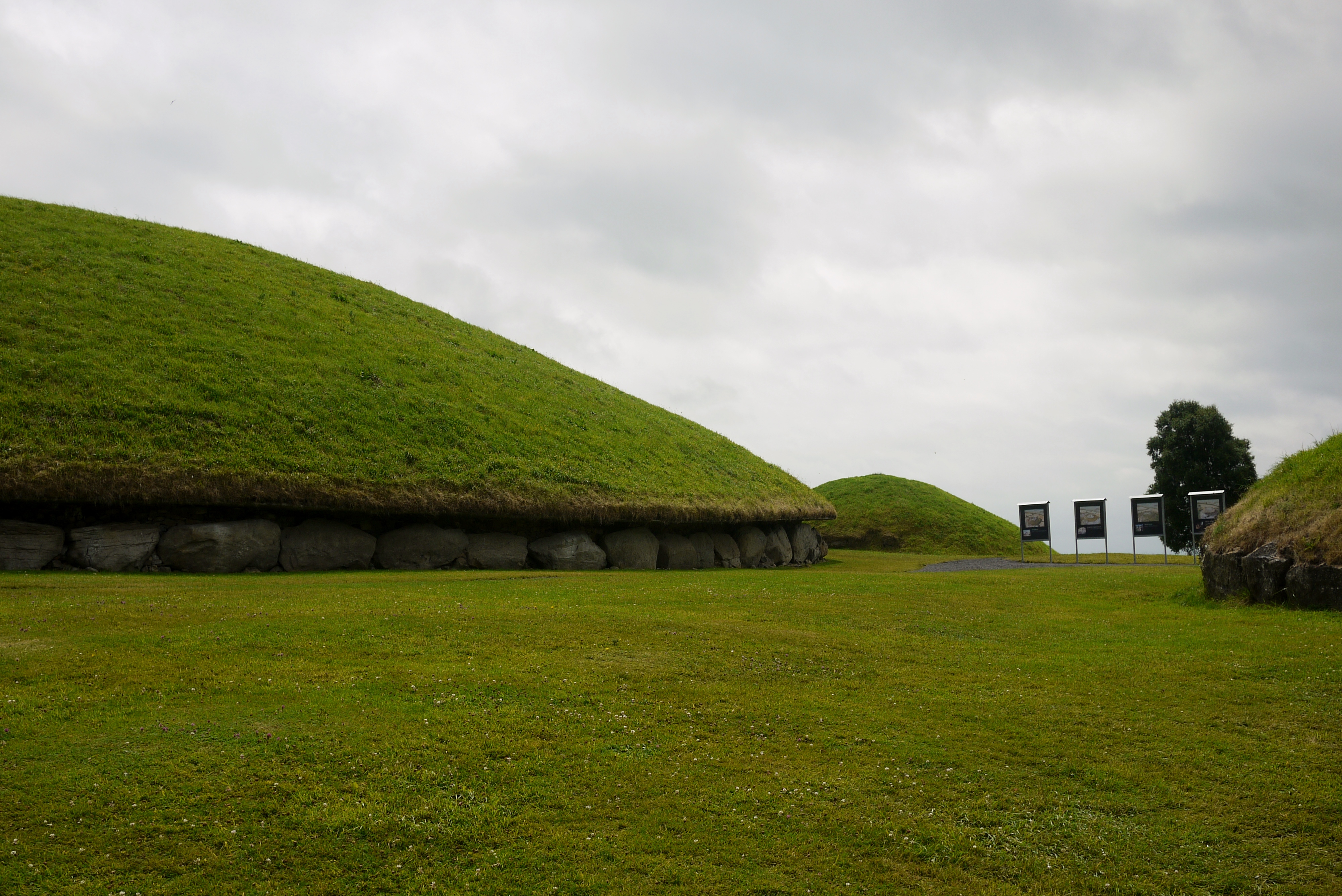
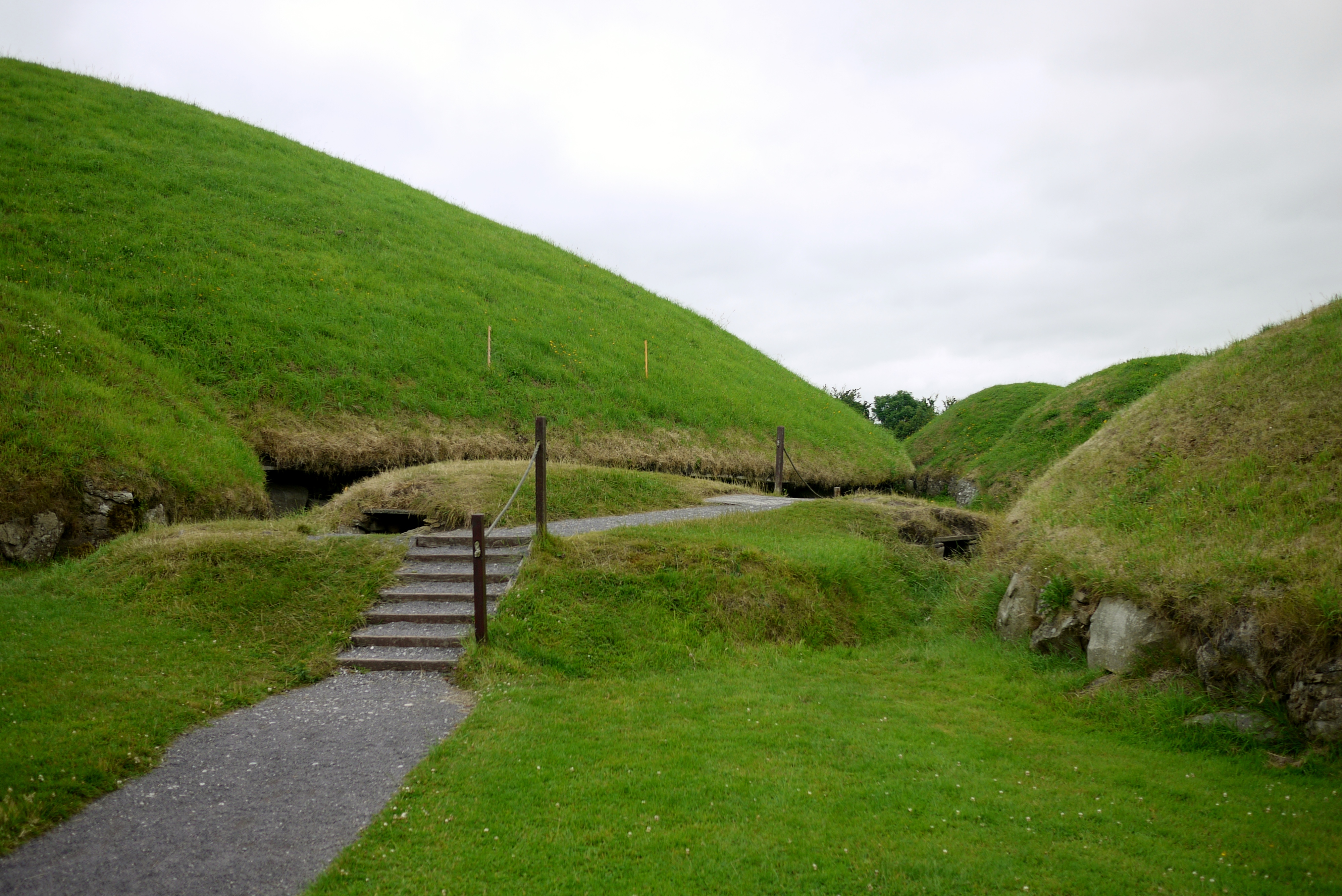
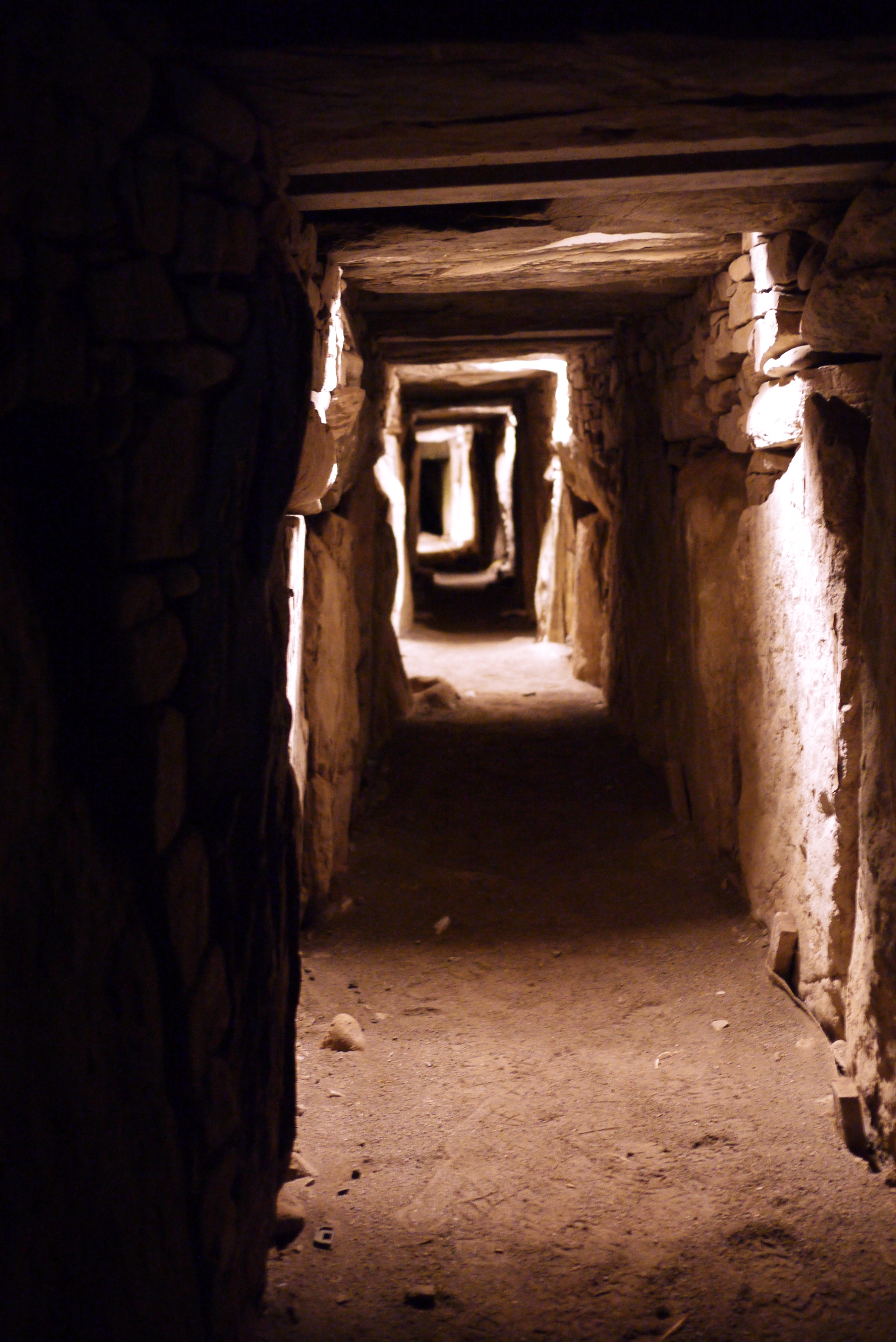
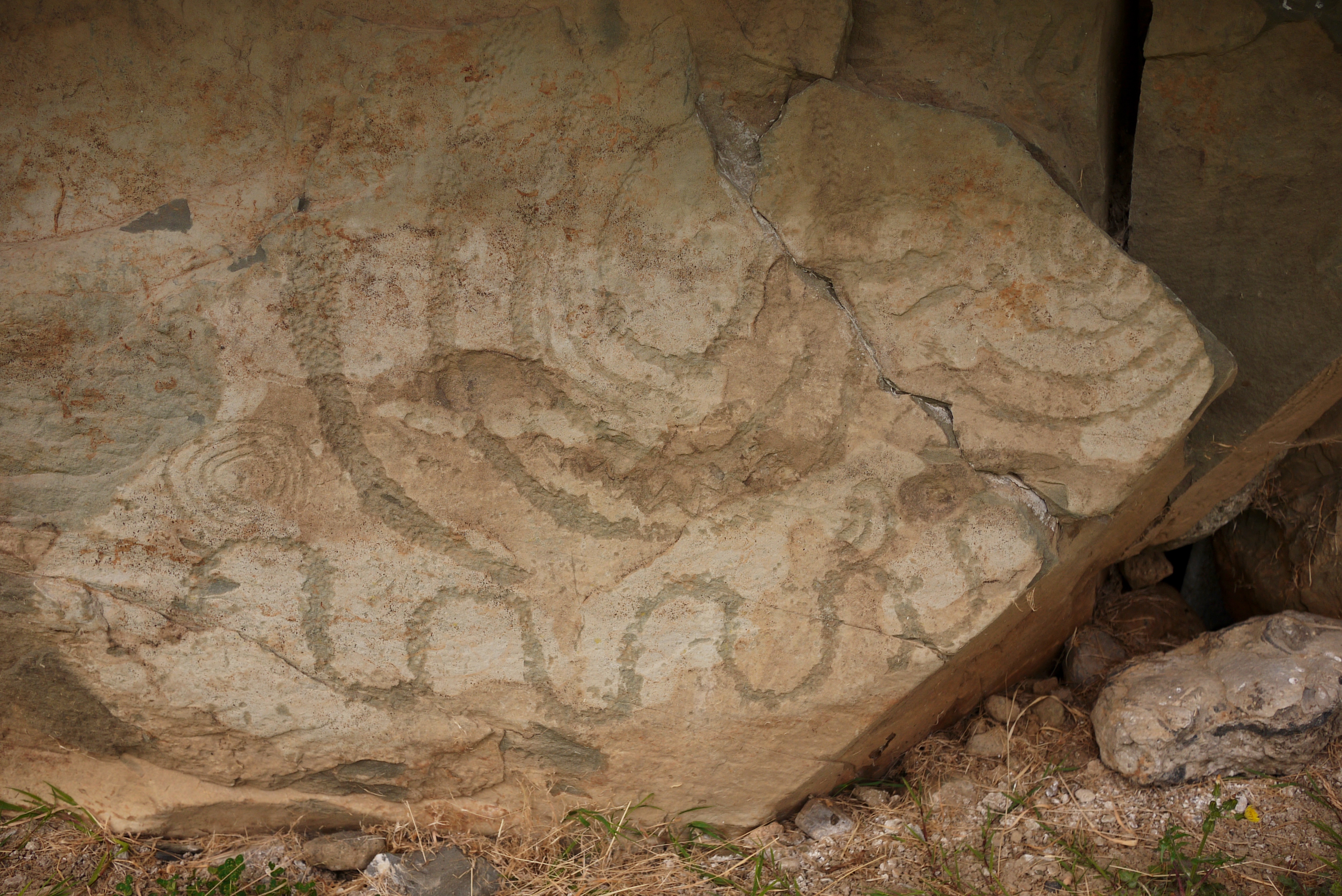
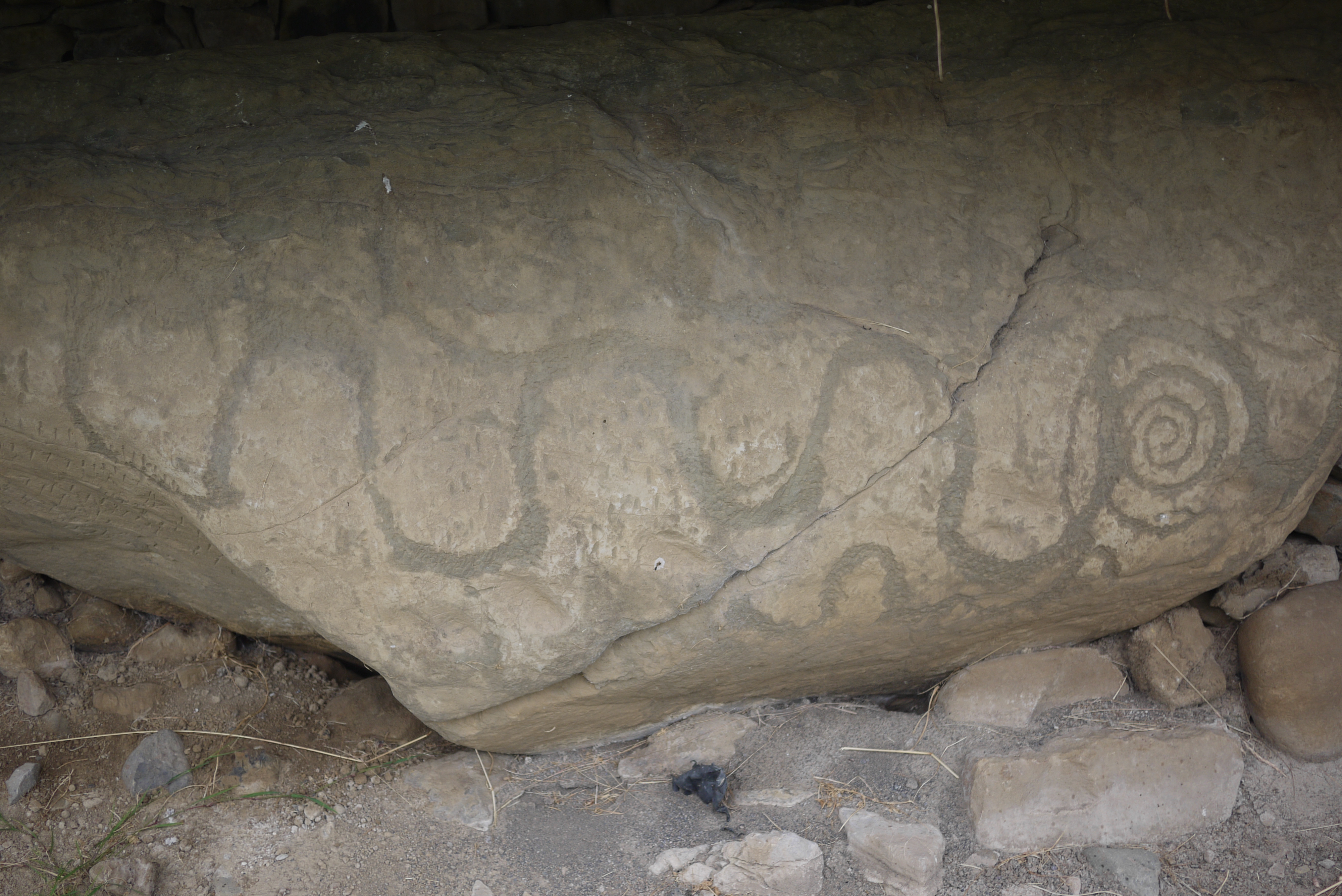


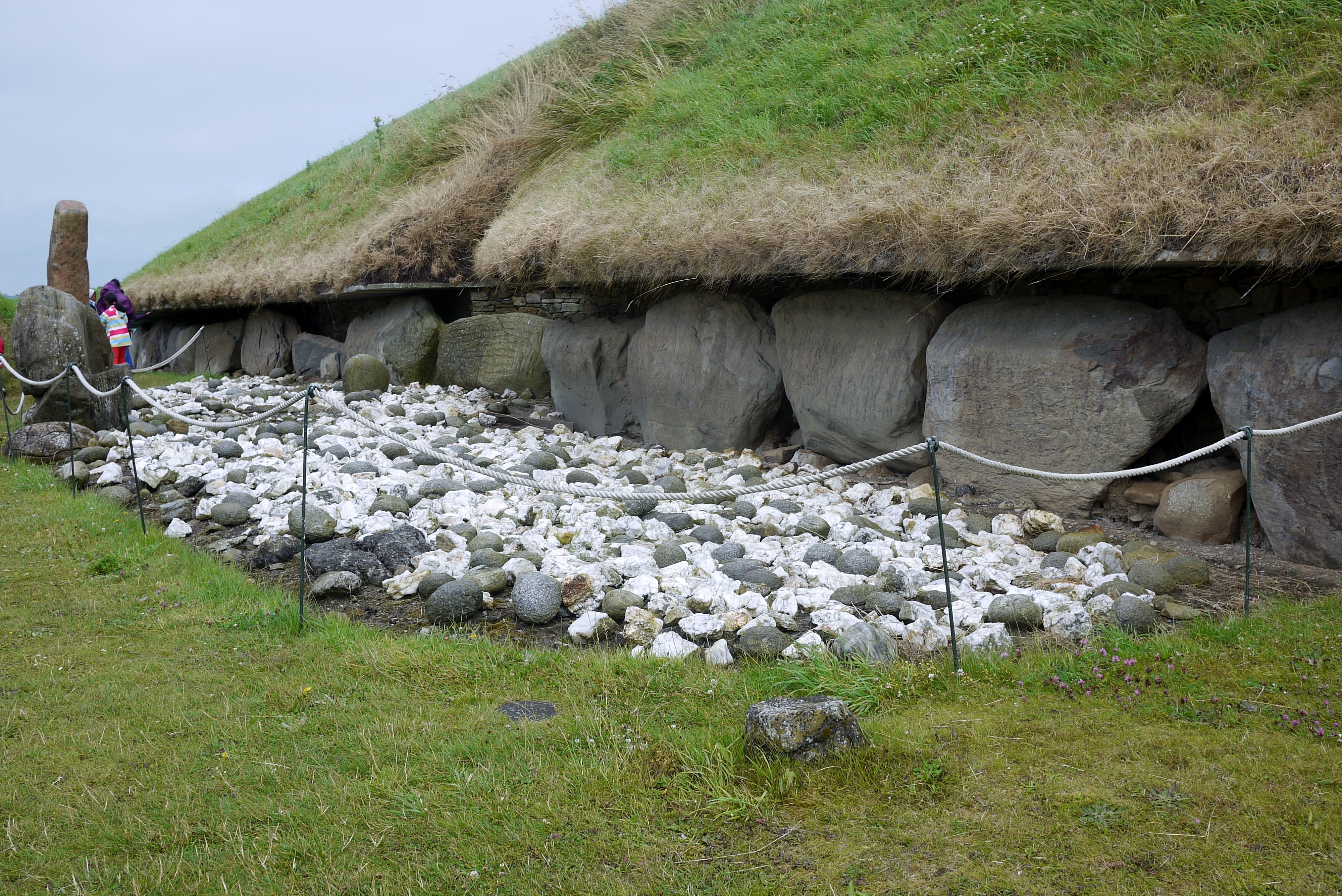


2 comments:
Googled "goatse"...glad I didn't google image it ><
These posts are really fascinating and wonderful to read! Ahhh I'd love to go to these sites with you :) You are so knowledgeable~
You might need some mind bleach handy if you ever image search it, for sure...
I'm glad you're enjoying them! It makes me feel my degree is at least useful for something :p
Post a Comment